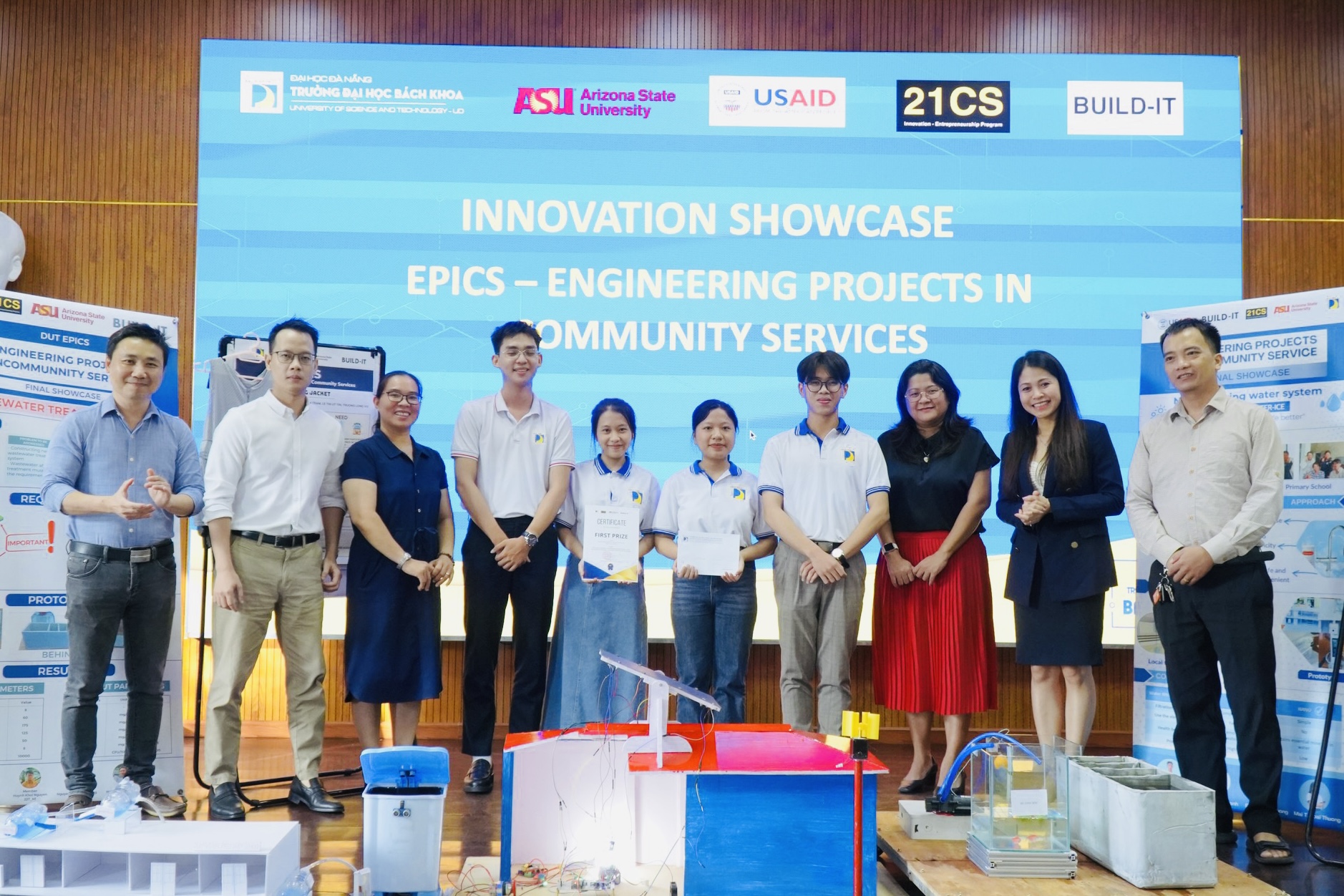Nanotechnology solution for drinking water purification
With a desire to provide clean water for teachers and pupils of the Duy Vinh Primary School based in Duy Xuyen District, Quang Nam Province, Team Water Ice from the Da Nang University of Science and Technology has successfully researched the project ‘Drinking water system using nanofiltration technology’.
 |
| Members of the Water Ice team and their lecturers receiving the first prize at the Global Epics Innovation Showcase 2023. Photo: H.T.V |
The project surpassed many teams from universities across the country and the Arizona State University in the USA to win the first prize of the Global EPICS Innovation Showcase 2023.
Within the framework of the BUILD-IT project, the Global Epics Innovation Showcase 2023 contest was organised by the US Arizona State University and some of Viet Nam’s leading technical universities in an online form. All contestants were required to entirely present their projects in English.
The purpose of the contest was to encourage students to focus on three problems relating to clean water supply, wastewater treatment and energy supply. From there, the solutions proposed by participating groups will help upgrade the water system at the Duy Vinh Primary School which is invested by the United States Agency for International Development (USAID) and managed by the US Army Corps of Engineers (USACE).
It is known that USACE combined with BUILD-IT to search for engineering projects to serve the community from students.
Sharing about the project idea, Hoang Van Thang from Class 22 ECE, the Faculty of Advanced Science and Technology, the University of Science and Technology, who is the leader of Team Water Ice, said that the team spent many months conducting surveys on the drinking water supply and filtration system of 81 students and 6 teachers at the Duy Vinh Primary School, and then found many problems such as low water pressure and unclean water intake and sewage faucet. Faced with this situation, the team decided to create a water supply and purification system using nanotechnology.
According to Thang, the operating principle of the system is that on a normal day, water is pumped from the water line to the roof of the school, stored in a 1,000-liter tank placed 1m high above the roof floor.
From there, water continues to flow through the three water filters provided by the group, resulting in water that meets Japanese standards. Next, the water flows into another 1,000 liter tank (the tank after filtration) and from this tank, the water splits into 3 ways: one way down to the teacher's toilet, one down to the student toilet and the other way will go through 2 CLEANSUI nanofilters located on the 1st and 2nd floors.
“For a rainy day, when there is a water loss and power failure, students and teachers can still use up over 2,000 liters of water stored in a tank on the roof. After using all the water on the roof, they will use the well water system which will be brought up the 2,000-liter tank, 2m high above the ground for pre-filtration treatment. Then, the water from the tub will flow through 3 similar filters and finally through the CLEANSUI nano filter for direct drinking. The output water source, the team has tested and the results meet the water supply standards of the Ministry of Health of Viet Nam (pH and TDS)" Thang described.
Meanwhile, student Tran Nguyen Khanh, class 21 TDHCLC2, Faculty of Electrical Engineering, a member of the Water Ice team, said that the advantage of the system is that it can be used in case of power failure, water loss and water filtration using water pressure (not dependent on power), reasonable maintenance and installation costs, and safe drinking water. However, the disadvantage of the system is that it takes up quite a bit of space.
Directly instructing the Water ICE team, Dr. Le Thi Xuan Thuy, Faculty of Environment, the University of Science and Technology, said that the Water Ice team's project was evaluated as highly applicable and feasible, with a reasonable price. If the project is actually implemented, it will solve many problems of clean water supply as well as wastewater treatment at the Duy Vinh Primary School.
Reporting by HUYNH TUONG VY - Translating by M.DUNG








